Ford Puma vs VW Caddy – Performance, range & efficiency compared
Two cars, one duel: Ford Puma meets VW Caddy.
Which one wins in performance, efficiency and value for money? Find out now!
Costs and Efficiency:
When it comes to price and running costs, the biggest differences usually appear. This is often where you see which car fits your budget better in the long run.
Ford Puma has a somewhat advantage in terms of price – it starts at 24800 £, while the VW Caddy costs 27800 £. That’s a price difference of around 2988 £.
Fuel consumption also shows a difference: VW Caddy manages with 0.50 L and is therefore clearly more efficient than the Ford Puma with 5.40 L. The difference is about 4.90 L per 100 km.
As for range, the Ford Puma performs clearly better – achieving up to 376 km, about 255 km more than the VW Caddy.
Engine and Performance:
Power, torque and acceleration are the classic benchmarks for car enthusiasts – and here, some clear differences start to show.
When it comes to engine power, the Ford Puma has a slightly edge – offering 168 HP compared to 150 HP. That’s roughly 18 HP more horsepower.
In acceleration from 0 to 100 km/h, the Ford Puma is convincingly quicker – completing the sprint in 7.40 s, while the VW Caddy takes 11.40 s. That’s about 4 s faster.
In terms of top speed, the Ford Puma performs to a small extent better – reaching 210 km/h, while the VW Caddy tops out at 186 km/h. The difference is around 24 km/h.
There’s also a difference in torque: VW Caddy pulls barely noticeable stronger with 320 Nm compared to 290 Nm. That’s about 30 Nm difference.
Space and Everyday Use:
Cabin size, boot volume and payload all play a role in everyday practicality. Here, comfort and flexibility make the difference.
Seats: VW Caddy offers distinct more seating capacity – 7 vs 5.
In curb weight, Ford Puma is slightly lighter – 1316 kg compared to 1575 kg. The difference is around 259 kg.
In maximum load capacity, the VW Caddy performs decisively better – up to 3700 L, which is about 2417 L more than the Ford Puma.
When it comes to payload, VW Caddy noticeable takes the win – 710 kg compared to 469 kg. That’s a difference of about 241 kg.
Who comes out on top?
Overall, the VW Caddy shows itself to be dominates this comparison and secures the title of DriveDuel Champion.
It convinces with the more balanced overall package and proves to be the more versatile choice for everyday use.
 @ vwpress
@ vwpress
VW Caddy
Ford Puma
The Ford Puma presents itself as a stylish compact SUV with a distinctive design that combines practicality with a dynamic driving experience. Its sleek lines and sporty aesthetics make it stand out on the road, while the interior offers a comfortable and tech-savvy environment. With an emphasis on efficiency and a smooth drive, the Ford Puma is well-suited for both urban commutes and countryside adventures.
details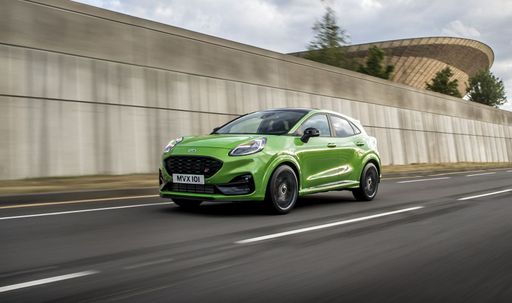 @ puma.fordpresskits.com
@ puma.fordpresskits.com
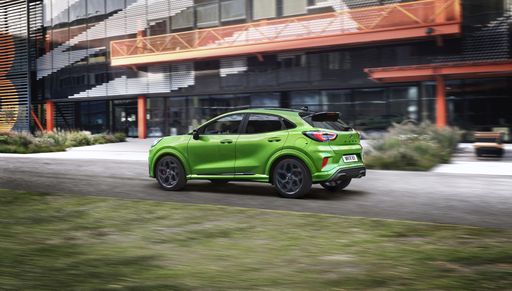 @ puma.fordpresskits.com
@ puma.fordpresskits.com
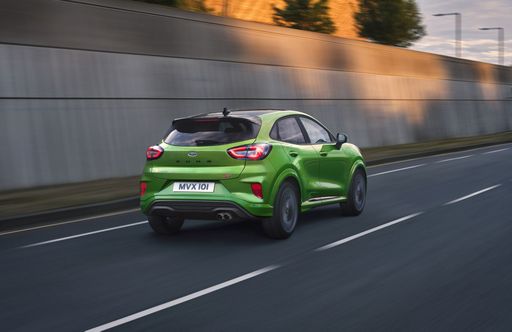 @ puma.fordpresskits.com
@ puma.fordpresskits.com
 @ puma.fordpresskits.com
@ puma.fordpresskits.com
VW Caddy
The VW Nutzfahrzeuge Caddy Hochdach-Kombi is a versatile choice for those seeking extra space and practicality in their everyday vehicle. With its functional high roof and adaptable interior, it easily accommodates both passengers and cargo. The Caddy also stands out with its modern design and features aimed at providing comfort and convenience on the road.
details @ vwpress
@ vwpress
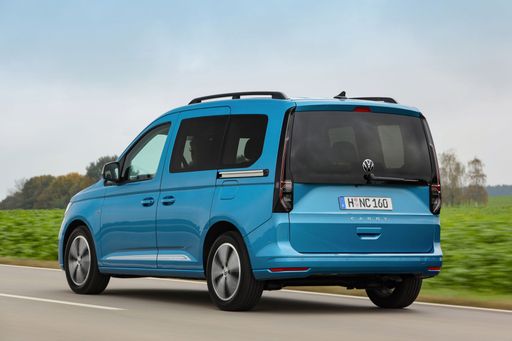 @ vwpress
@ vwpress
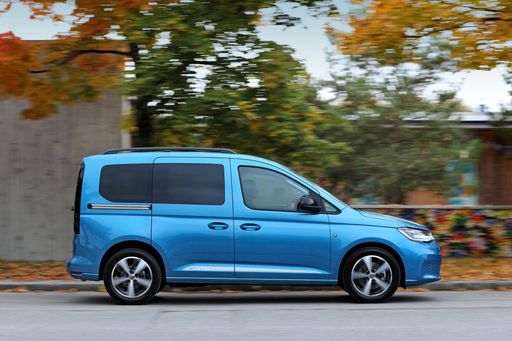 @ vwpress
@ vwpress
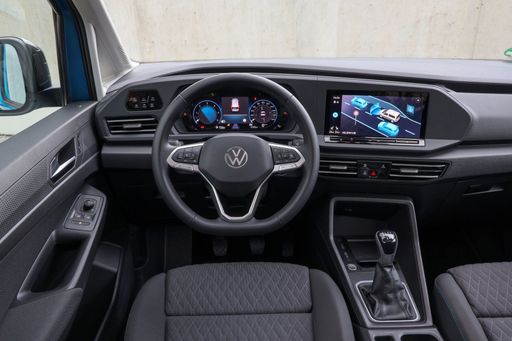 @ vwpress
@ vwpress
 @ puma.fordpresskits.com
@ puma.fordpresskits.com
|
 @ vwpress
@ vwpress
|
|
|
|
Costs and Consumption |
|
|---|---|
|
Price
24800 - 36300 £
|
Price
27800 - 45900 £
|
|
Consumption L/100km
5.4 - 5.9 L
|
Consumption L/100km
0.5 - 6.9 L
|
|
Consumption kWh/100km
13.1 - 13.9 kWh
|
Consumption kWh/100km
-
|
|
Electric Range
361 - 376 km
|
Electric Range
116 - 121 km
|
|
Battery Capacity
43 kWh
|
Battery Capacity
19.70 kWh
|
|
co2
0 - 135 g/km
|
co2
10 - 165 g/km
|
|
Fuel tank capacity
42 L
|
Fuel tank capacity
50 L
|
Dimensions and Body |
|
|---|---|
|
Body Type
SUV
|
Body Type
High Roof Estate
|
|
Seats
5
|
Seats
5 - 7
|
|
Doors
5
|
Doors
5
|
|
Curb weight
1316 - 1563 kg
|
Curb weight
1575 - 1998 kg
|
|
Trunk capacity
456 - 523 L
|
Trunk capacity
-
|
|
Length
4186 - 4226 mm
|
Length
4500 - 4853 mm
|
|
Width
1805 mm
|
Width
1855 mm
|
|
Height
1550 - 1555 mm
|
Height
1819 - 1860 mm
|
|
Max trunk capacity
1216 - 1283 L
|
Max trunk capacity
2556 - 3700 L
|
|
Payload
367 - 469 kg
|
Payload
501 - 710 kg
|
Engine and Performance |
|
|---|---|
|
Engine Type
Electric, Petrol MHEV
|
Engine Type
Petrol, Diesel, Plugin Hybrid
|
|
Transmission
Automatic, Manuel
|
Transmission
Manuel, Automatic
|
|
Transmission Detail
Reduction Gearbox, Manual Gearbox, Dual-Clutch Automatic
|
Transmission Detail
Manual Gearbox, Dual-Clutch Automatic
|
|
Drive Type
Front-Wheel Drive
|
Drive Type
Front-Wheel Drive, All-Wheel Drive
|
|
Power HP
125 - 168 HP
|
Power HP
102 - 150 HP
|
|
Acceleration 0-100km/h
7.4 - 9.8 s
|
Acceleration 0-100km/h
11.4 - 14 s
|
|
Max Speed
160 - 210 km/h
|
Max Speed
173 - 186 km/h
|
|
Torque
170 - 290 Nm
|
Torque
220 - 320 Nm
|
|
Number of Cylinders
3
|
Number of Cylinders
4
|
|
Power kW
92 - 124 kW
|
Power kW
75 - 110 kW
|
|
Engine capacity
999 cm3
|
Engine capacity
1498 - 1968 cm3
|
General |
|
|---|---|
|
Model Year
2025
|
Model Year
2024
|
|
CO2 Efficiency Class
A, D
|
CO2 Efficiency Class
E, F, B
|
|
Brand
Ford
|
Brand
VW
|
Is the Ford Puma offered with different drivetrains?
The Ford Puma is offered with Front-Wheel Drive.
The prices and data displayed are estimates based on German list prices and may vary by country. This information is not legally binding.
